Who invented the microscope?
Who invented the microscope?
The smallest item in the world to our ancestors was anything that could only be seen with their eyes, such as hair, tiny insects, sand particles, and so on. Many objects in the world are invisible to our eyes, but they exist and were only discovered after discovering the microscope.

We can understand the importance of the microscope just by its use in the modern-day. It is being used in almost most medical and test labs, even in many mining sectors.This article will take a look at the inventor of this device. It will also be interesting to know how the microscope has progressed over the years.
Why Microscope?
The microscope usage is extremely useful in the scientific world, which helps scientists in many discoveries that we would not have discovered with normal eyes. It makes microscopes to become more prevalent in recent years. For example, many illnesses are being controlled across the world, and new medications are being developed. Thus, discovering organisms and other biological phenomena and observing changes in them becomes easy.
Thousands of planets, stars, and black holes exist in space, far beyond human sight. That is why, to monitor such objects, we need a telescope, which aids in understanding distant objects. Similarly, our eyes are unable to see even the most minor things. We can't see the microorganisms that live on and around our bodies. But they are also alive and continue to benefit or damage us.
Earliest Alternative ofthe Microscope
Before the invention of the microscope, humans adopted many techniques to see the object by expanding its size. For example, one of the famous techniques they used is to fill water in any transparent object to view the object. This technique was more prevalent in around 4000 BC.
Interestingly, spectacles were introduced before the invention of the microscope. However, people began attempting to create microscopes after seeing lenses used in spectacles in the 13th century.
Who invented the microscope?

The invention and history of the microscope are 400 years old. In 1590, the world's first microscope, called a compound microscope, was invented by a Dutch father-son team named Hans and Zacharias Janssen. However, he (Janssen) was between the ages of five and ten at the time of creation. One hypothesis is that he supported his father at their workshop, and so the credit should be shared between them.
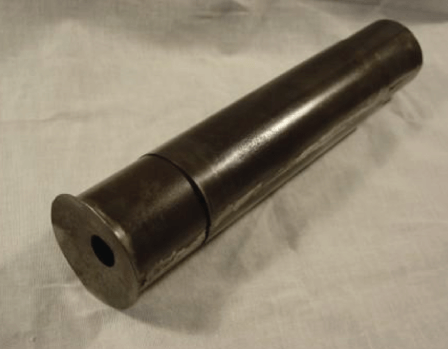
A portable central cylinder with a movable eyepiece and target tubes made up their microscope. The magnification ranged becomes three to nine times by using the bi-convex eyepiece and plano-convex objective lenses.
Naming the Instrument
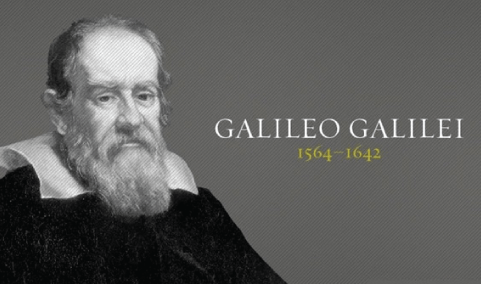
Galileo Galileienhanced the first microscope in 1609. The invention's news traveled throughout Europe, catching the interest of Galileo Galilei (1564-1642) and his botanical companion Giovanni Faber (1574-1629). In 1609, Galileo created his 'occhiolino,' and Faber was the first to propose the term' microscope,' combining the Greek words' micron' (small) and 'skopein' (scope) (to look at).
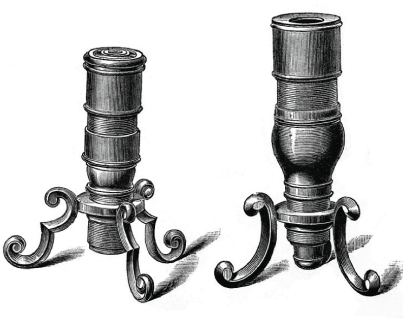
Galileo's microscope, essentially a modified telescope, included a bi-concave eyepiece and a bi-convex objective lens that could magnify objects up to 30 times. Even though none of Galileo's microscopes have survived, they all had a pedestal stand for vertical specimen viewing.
How does a microscope work?
The light rays are reflected on a mirror at the bottom of the microscope. Thus, these light beams travel through the object we wish to observe.The specimen is the thing we're looking at. For example, if we have a small piece of leaf, we will call it a specimen.
Light flows through the tube and into the specimen; the tube is created so that the light is reflected by enlarging the specimen. We can see this increased size with our own eyes. With the help of lenses, we can also zoom in and out according to our needs.
Different types of Microscopes
There are numerous distinct types of microscopes, but the four most common are compound, stereo, digital, and pocket or portable microscopes. Some are more suited for biological applications, while others are better suitable for usage in the classroom or as a personal hobby.
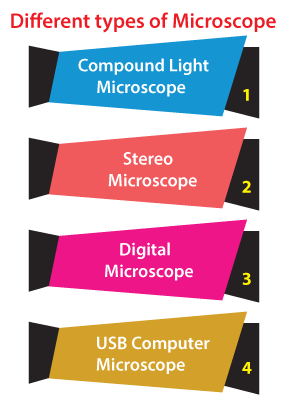
- The Compound Light Microscope
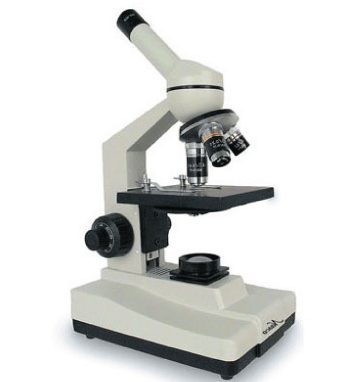
By combining the power of lenses with light, the compound light microscope, which is typically binocular (two eyepieces), enlarges the item being studied.
The eyepiece itself usually has a magnification of 10X or 15X. The magnification may reach a maximum of around 1000X when combined with the three or four objective lenses that can be rotated into the field of view.
Compound light microscopes are among the most common microscopes that areused in science and biology classrooms all the time.As a result, basic models are readily available and affordable. In addition, several microscopy imaging techniques are also beneficial to scientists and researchers who use the compound microscope and should be explored.
- The Stereo Microscope
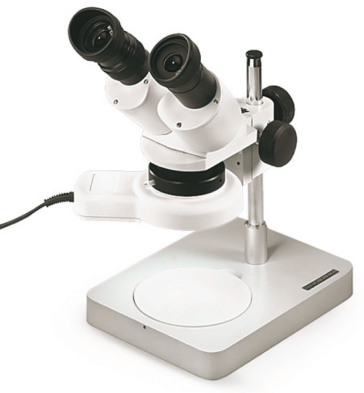
The stereo microscope, also known as a dissecting microscope, contains two optical pathways at slightly different angles that allow the image to be seen in three dimensions under the lenses.It has a moderate magnification power, usually between 10 and 200 times, and usually less than 100 times. This microscope may be purchased in either a fixed or zoom configuration from a manufacturer and affordable.
Surface examination, microsurgery, watchmaking, and the construction and inspection of circuit boards are all applications for this sort of microscope. In addition, students can use stereo microscopes to see plant photosynthesis in action.
- The Digital Microscope
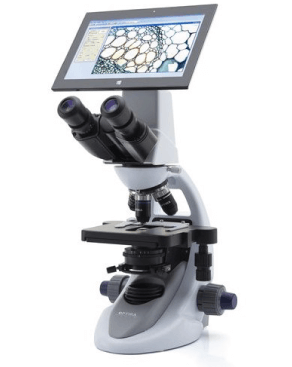
With a digital microscope, you can step into the twenty-first century and a world of incredible detail.The digital microscope, first introduced in Japan in 1986, uses the computer's capacity to see items that aren't visible to the naked eye.
This microscope can be found with or without eyepieces to gaze into among the many varieties of microscopes.It uses a USB cable to connect to a computer monitor, just like a printer or mouse. The computer program allows the enlarged specimen to be displayed on the monitor. In addition, single pictures or moving images can be captured in the computer's memory.
Digital microscopes benefit from being able to email photos and comfortably observe moving images for long periods.The digital microscope is becoming more popular in schools and among enthusiasts.
- The USB Computer Microscope
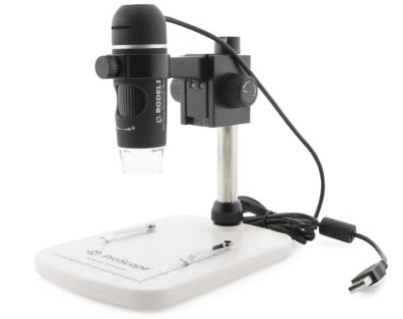
Among the various types of microscopes, the USB Computer microscope can be used on any item without requiring specimen preparation. However, it is not well suited to the same scientific purposes as other light microscopes.It's simply a macro lens for examining photos on a computer screen with a USB port hooked in.
However, the magnification is limited and does not compare to a standard compound light microscope, which can only magnify up to 200X and has a shallow depth of field.It is a low-cost gadget that can be purchased for about $200US, making it ideal for amateurs and children.
Microscope applications and purposes
One of the most common applications of a microscope is to examine things that are so small and undetectable to the human eye. Depending on the sectors in which it is used, this instrument has a variety of uses. For example, it may solve crimes, treat diseases, produce new materials, and even analyze historical remains.
Microscopes are used in the following applications:
- Botanical Field
- Biological Field
- Crime Investigation
- Educational Field
- Medical Field
Microscope in Botanical Field
This instrument is used by lab experts and students who wish to examine the characteristics of leaves, their cells, and many other aspects of a plant. In addition, botanists conduct many studies on various plants and fungi for research objectives, which allows them to discover many new characteristics.
Microscope in Biological Field
This instrument has been observed in all biological laboratories. It is used to look at microorganisms and their characteristics. Microscopes are used to examine bacteria, cells, and other organisms in this area. In addition, biologists can use this instrument to examine living creatures and their cell architecture.
Microscope in Crime Investigation
Microscopes are used in the criminal justice system to reduce complicated evidence and examine it to solve cases. In addition, we use this instrument for forensic purposes to determine whether or not the prisoner is guilty. These instruments are widely used in this sector, and without them, it would be impossible to study some objects that are not apparent to the naked sight.
Microscope in Educational Field
This lab tool may be found in every major department's laboratory at numerous institutions, colleges, schools, and universities, among other optical devices. Students use this instrument to learn new things and gain a better understanding of the world around them. It is one of the most popular devices among students due to its versatility.
Microscope in Medical Field
Without the use of microscopes, humanity's most significant contribution to healthcare would not have been feasible. Scientists and lab workers use this instrument to research numerous viruses and bacteria to cure chronic illnesses. In addition, this gadget is used by researchers to investigate dangerous germs and how they influence the human body.